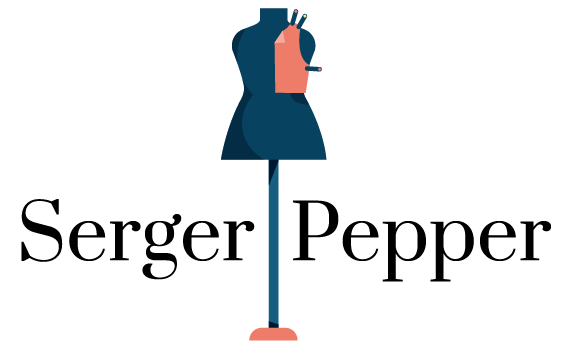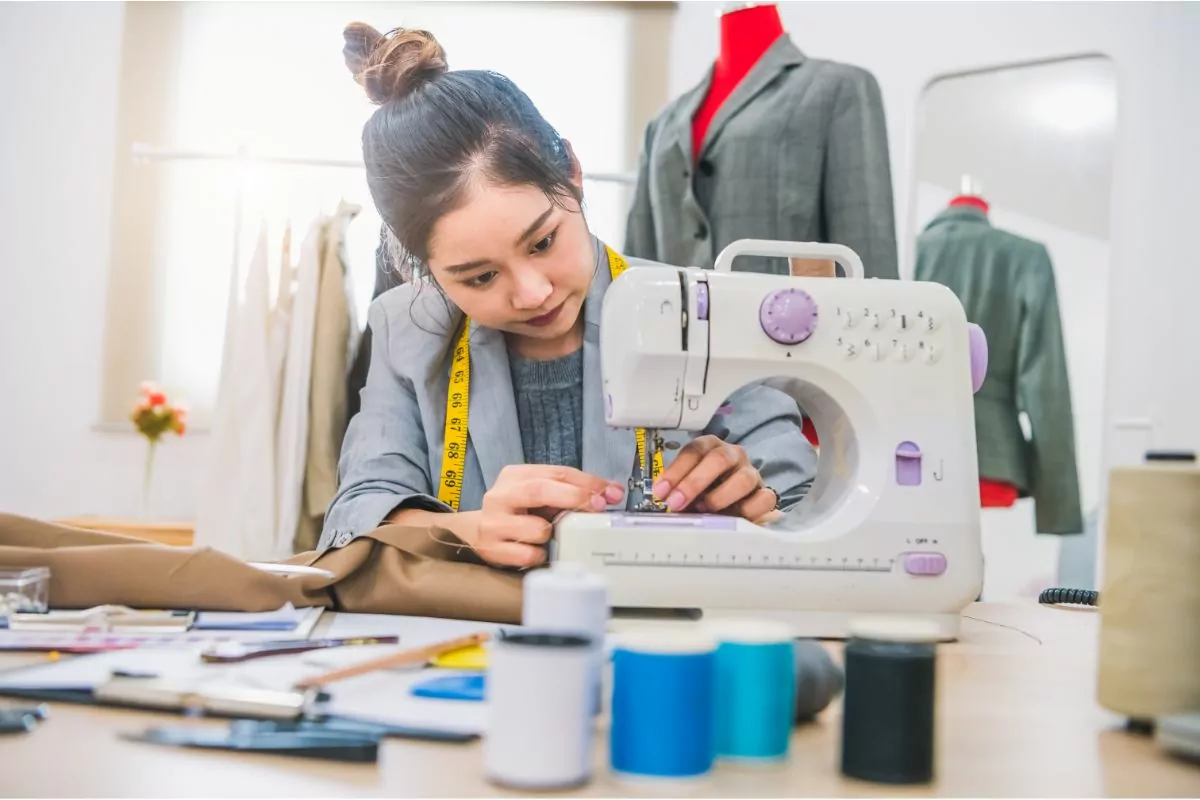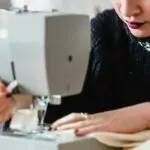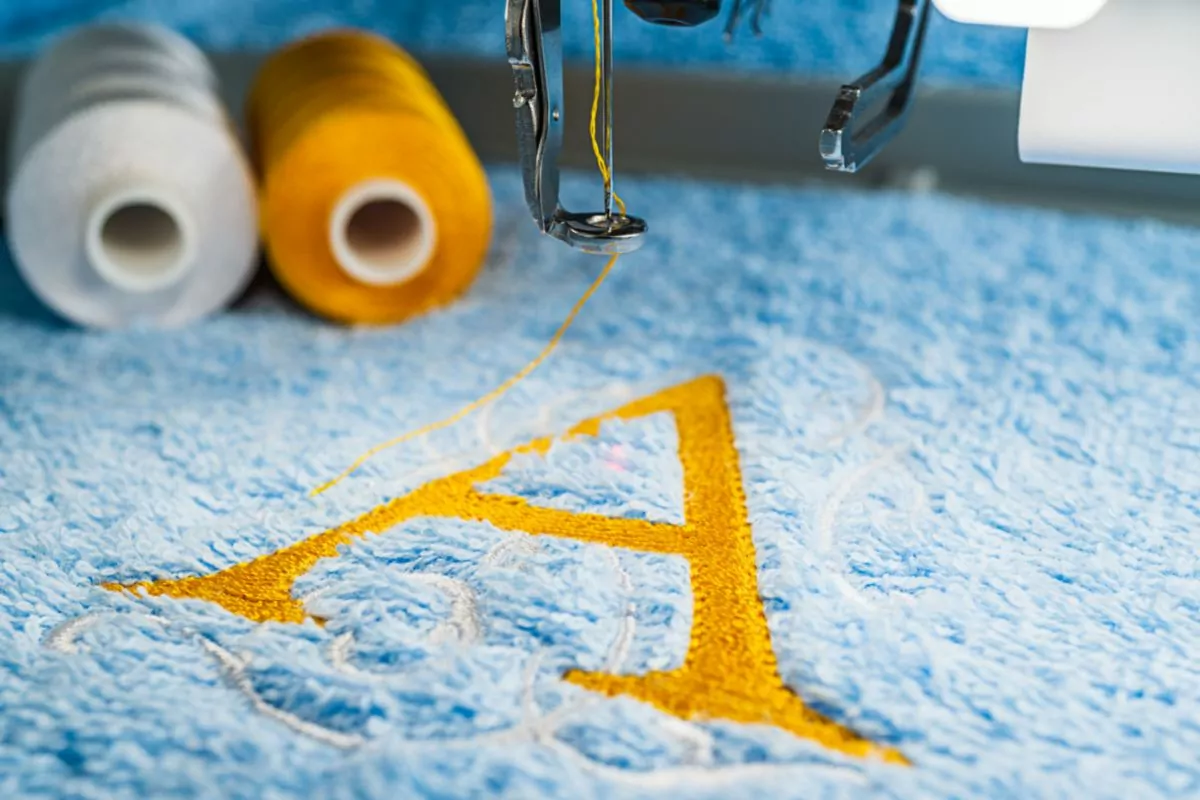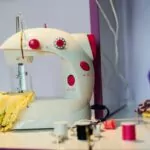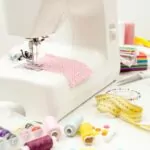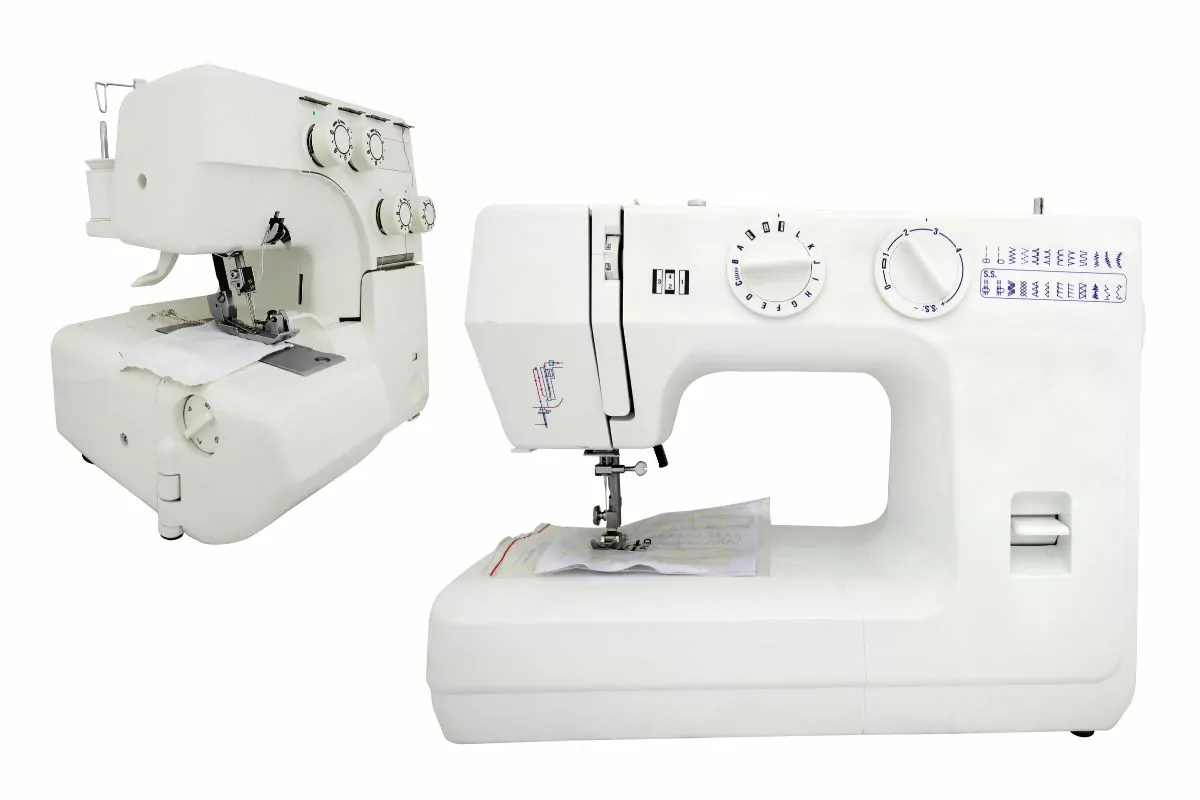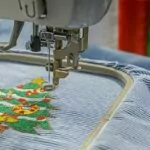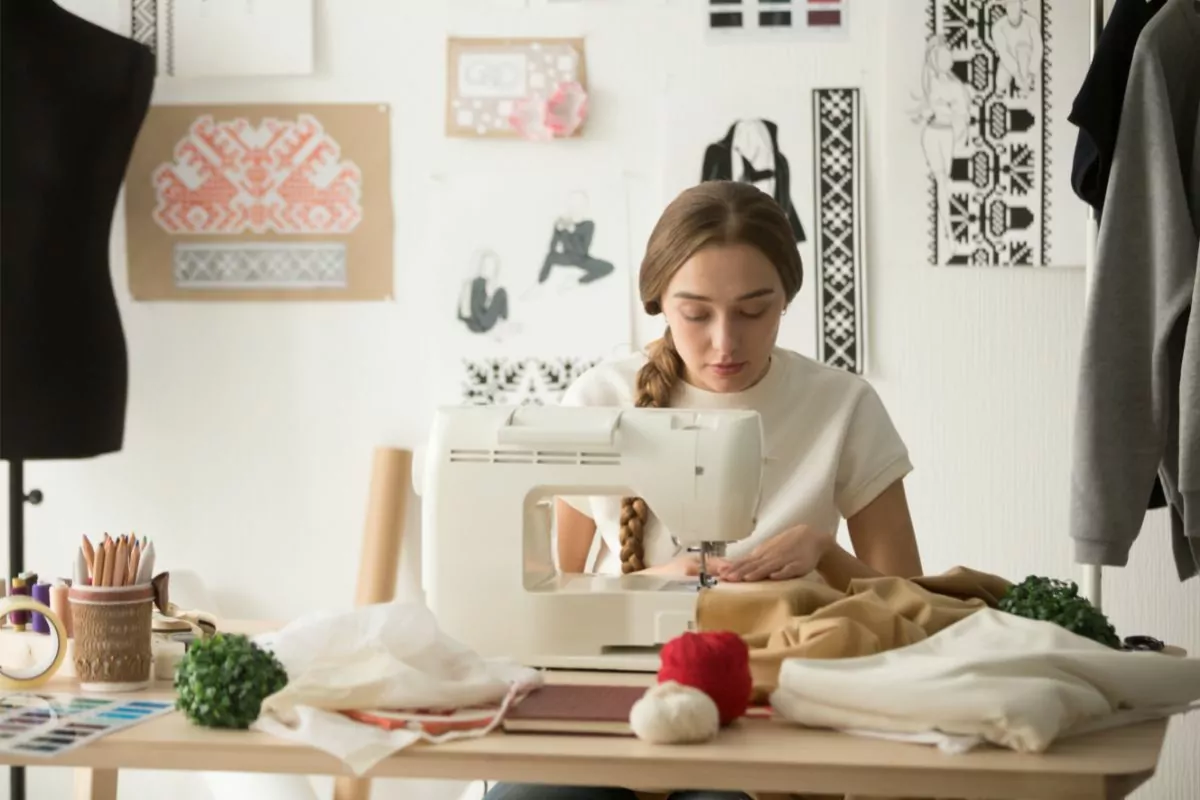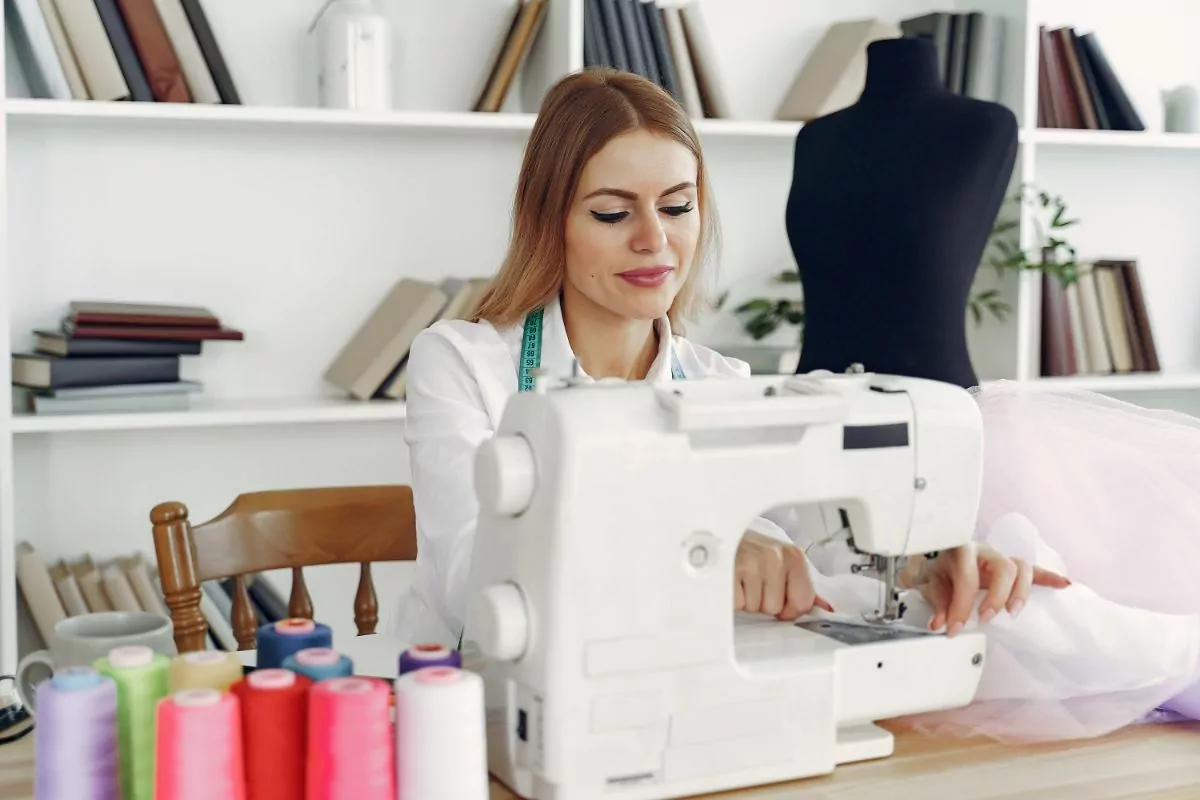It might be daunting and difficult to use a sewing machine for the first time; stitching a straight line might even seem impossible!
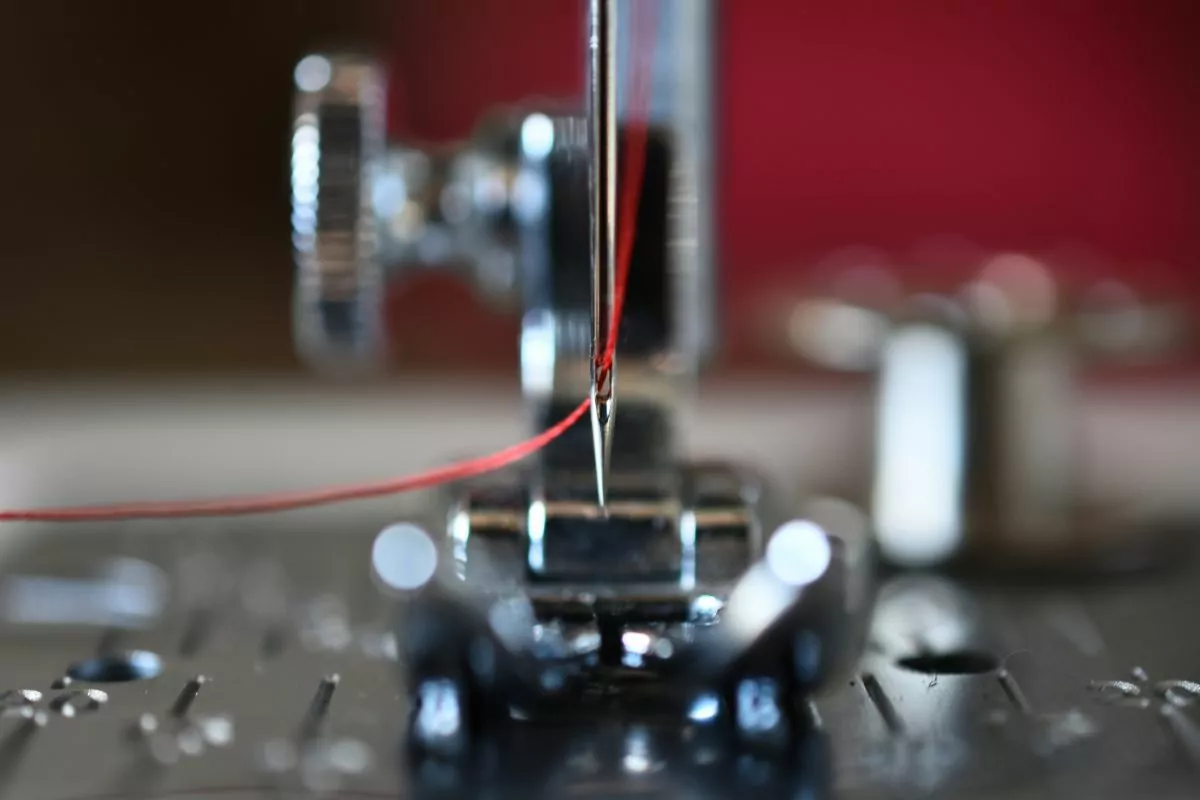
Once you grasp a few basic techniques and give yourself plenty of practice time, you start to notice a noticeable improvement in your work.
In this guide, we’ll show you the best way to sew straight lines.
This guide will tell you everything you need to know about this must-have sewing skill.
How To Sew Straight Lines Using A Sewing Machine
1. Get To Know Your Sewing Machine
Any sewing issue you run into can be resolved by becoming familiar with your sewing machine and its capabilities.
If you purchase your sewing machine from a local store, the seller is probably going to give courses to help you get the most out of your sewing machine.
Make sure the sewing machine handbook is included if you buy your sewing machine used or from a box retailer.
As you start to learn how to sew, read the handbook and refer to it frequently.
2. Set A Seam Guide
You should use the seam guide on your sewing machine to guarantee a straight line of stitching.
The seam guide is a line on your sewing machine with which you want the fabric’s edge to line up while you sew.
If you find it difficult to read all those small markings, line up your fabric along the edge and sew while using a piece of washi tape, painter’s tape, or masking tape on your sewing machine.
You can also use a washable marker or a chalk pencil to draw your stitch line on your fabric.
Using a magnetic seam guide is an alternative. Use it to guide the fabric as you place it on your machine at the appropriate seam width.
If you have a computerized sewing machine, be careful not to use one since it could harm important parts. If it is, you can substitute a sewing edge.
Similar to the magnetic seam guide, these are strong, reusable vinyl strips that you can fasten to your sewing machine (see also “Common Reasons Your Sewing Machine Keeps Jamming“).
3. Watch The Guide, Not The Needle
Train yourself to look at the guide instead of the sewing machine needle if you want to sew straight.
If you watch the needle as you sew, you won’t stitch straight because it moves continually.
As your fabric travels along, it is much better to concentrate on the seam guide because it is fixed, resulting in much straighter seams.
4. Control The Speed
Try operating your machine without any thread or fabric to understand how to adjust the speed.
This will allow you to concentrate solely on the speed without having to worry about anything else.
Controlling the sewing machine’s speed is an essential first step in mastering stitch control when beginning to sew, as you don’t want to sew too fast and ruin your fabric.
Many sewing machine types have a speed setting dial that can be changed from extremely slow to very fast; tortoise and hare images are commonly used to represent the dial’s two opposite ends.
You might want to try sewing barefoot to gain control of the foot pedal if your machine is really basic and lacks this setting.
Find anything, such as a small piece of wood, that will fit against the foot pedal and keep your foot from pressing it all the way down if you want to be sure you won’t stitch too quickly.
5. Put The Fabric In The Right Position
The fabric needs to be behind the sewing machine, feeding straight as it goes through the machine.
If it’s off to one side, the fabric can tug in that direction, causing you to struggle with it and skew your lines.
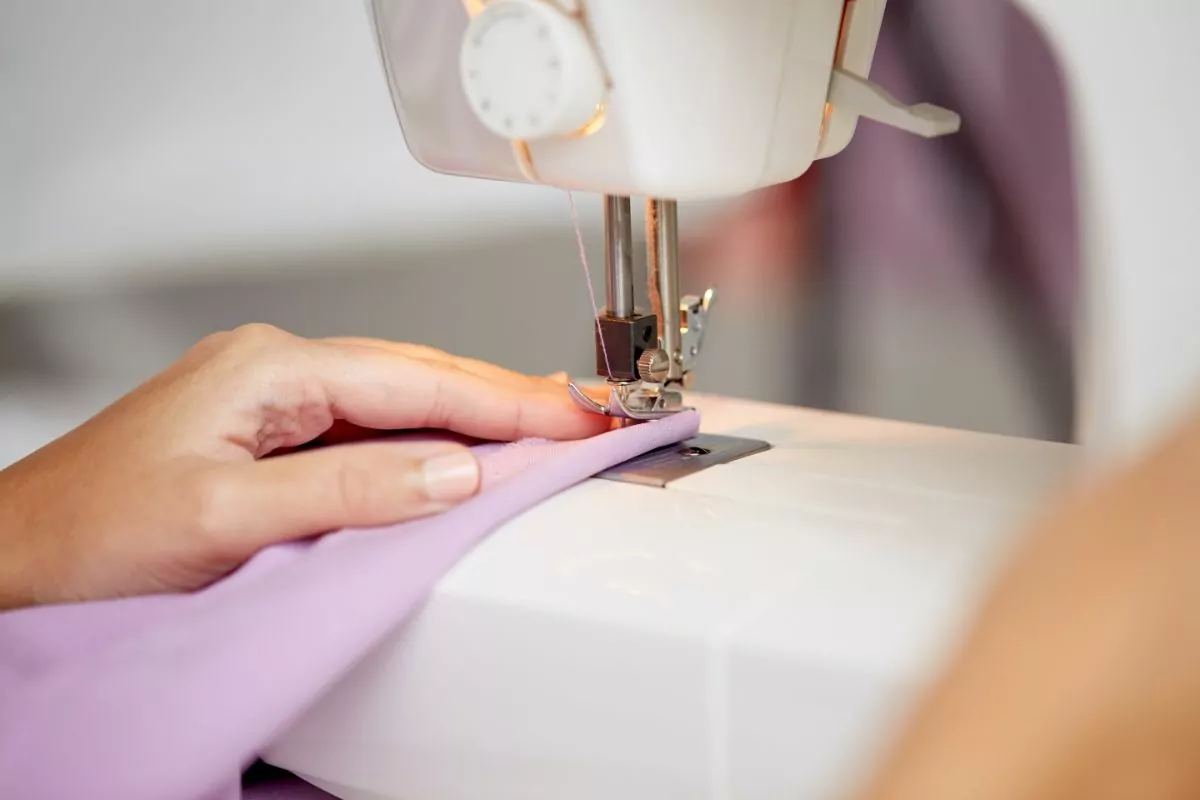
Instead of having the fabric hanging down on your lap, you might find it easier to have it lying on the table in front of your sewing machine.
Your feed dogs might be unable to pull the fabric through evenly due to the additional pull on the hanging fabric.
6. Guide, Don’t Pull
The fabric is excellently fed through the sewing machine by the feed dogs.
In fact, you can almost sew with no hands provided your fabric is positioned correctly. Instead of pulling the fabric around continually, try to just guide it into place.
7. Adjust The Needle Position
The fabric may not be held by both sets of feed dogs when stitching small seams or hems that are near the edge of the fabric.
As a result, your fabric may not feed uniformly and might even pull away from your stitching line.
To achieve the small seam you need, place the fabric beneath the presser foot so that it is being guided by both sets of feed dogs and move your needle position to the right.
When using a straight stitch on the majority of machines, you can change the stitch width to adjust the needle position.
Another significant aspect in aiding the sewing machine to produce straight stitching is using the correct needle for the fabric you are sewing.
If the fabric is not adequately penetrated by the sewing machine needle during the stitching process, the stitching may appear uneven or like a small zigzag.
8. Pay Attention To Seam Allowances
The space between the raw edge and the stitching line on two or more pieces of fabric is known as the seam allowance. You must always focus just on how close you are to the fabric edge.
Always keep to the seam allowance because it will determine the success or failure of your sewing project.
9. Take A Look At Your Fabric
You should be aware that there are various sorts of fabric, and that some are trickier to sew than others.
Cotton, linen, shirting fabric, chambray, and flannel are the textiles that are the easiest to sew.
They are suggested as fabrics for novices because they do not slip or stretch much.
On the other hand, flexible and slippery fabrics like satin, silk, rayon, and cotton jersey are notoriously challenging to stitch, so you might want to hold off on using them until you’ve had some practice sewing on easier materials.
10. Practice!
No one can sew flawlessly on their first try since it requires a lot of practice.
Gather fabric scraps, and give yourself permission to experiment with various sewing methods. If you like, you can also practice stitching lines on paper.
You can sew more confidently when you practice before beginning a real project (see also “Beginner Sewing Projects“). In other words, sewing will get easier the more you do it.
Final Thoughts
It’s time to try out these tips and begin a project now that you know what it takes to stitch a straight line.
Try with various threads and materials, and persevere until you’re satisfied with your creation.
With time and effort, you’ll improve your ability to stitch straight lines and eventually do so effortlessly.
- How To Sew Fabrics Together - June 5, 2023
- How Many Stitches Per Inch? - June 5, 2023
- How Long Does It Take To Sew A Dress? - June 5, 2023
